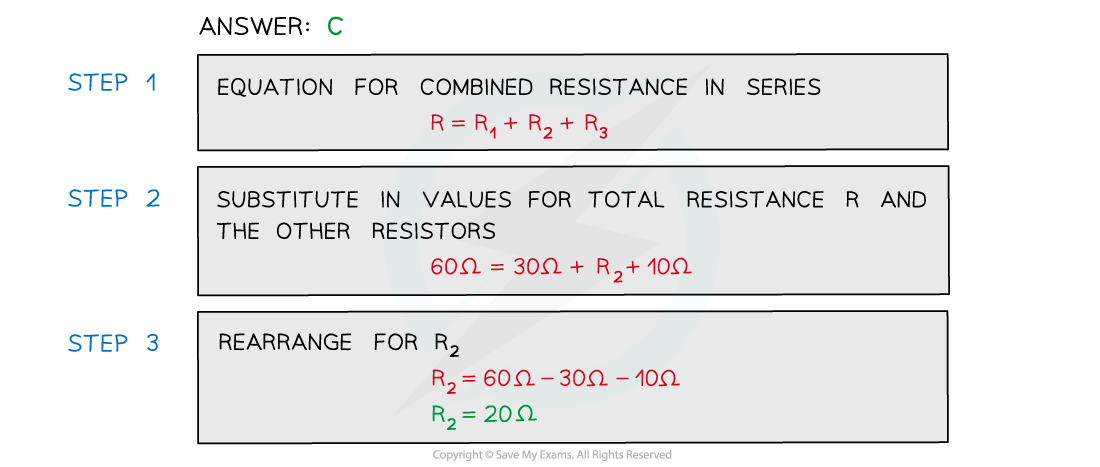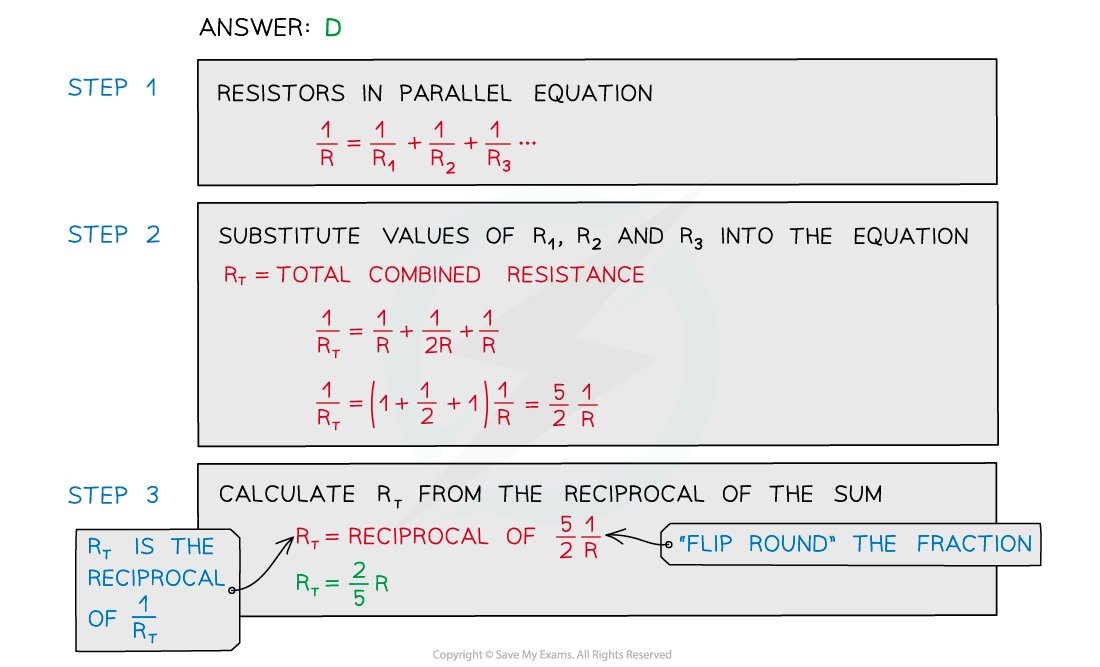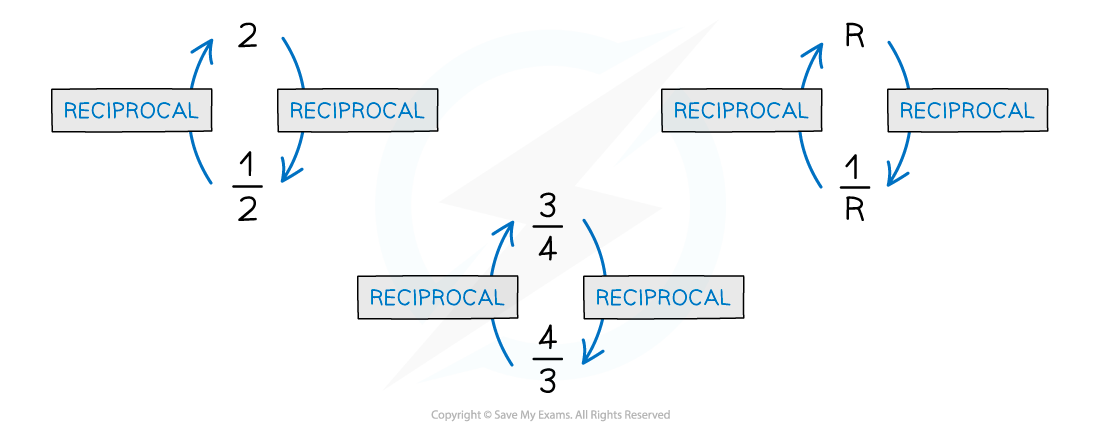Resistors in Series & Parallel (AQA AS Physics) : Revision Note
Resistors in Series & Parallel
Resistors in Series
When two or more components are connected in series:
The combined resistance of the components is equal to the sum of individual resistances

Resistors connected in series
To calculate the total resistance of resistors in series:

Worked Example
The combined resistance R in the following series circuit is 60 Ω.What is the resistance value of R2?

A. 100 Ω B. 30 Ω C. 20 Ω D. 40 Ω

Resistors in Parallel
When two or component are connected in parallel:
The reciprocal of the combined resistance is the sum of the reciprocals of the individual resistances

Resistors connected in parallel
To calculate the total resistance of resistors in parallel:

This means as more resistors are added, their combined resistance decreases and is, therefore, less than the resistance of the individual components
For example, If two resistors of equal resistance are connected in parallel, then the combined resistance will halve
Worked Example


Examiner Tips and Tricks
The most common mistake in questions about parallel resistors is to forget to find the reciprocal of RT (1/RT) instead of RT. Here is a maths tip to rejig your memory on reciprocals:
The reciprocal of a value is 1 / value
For example, the reciprocal of a whole number such as 2 equals ½
Conversely, the reciprocal of ½ is 2
If the number is already a fraction, the numerator and denominator are ‘flipped’ round

The reciprocal of a number is 1 ÷ number
In the case of the resistance R, this becomes 1/R
To get the value of R from 1/R, you must calculate 1 ÷ your answer
You can also use the reciprocal button on your calculator (labelled either x-1 or 1/x, depending on your calculator)

You've read 0 of your 5 free revision notes this week
Sign up now. It’s free!
Did this page help you?